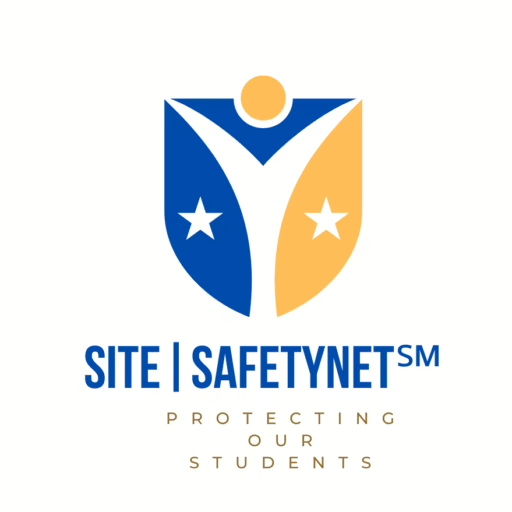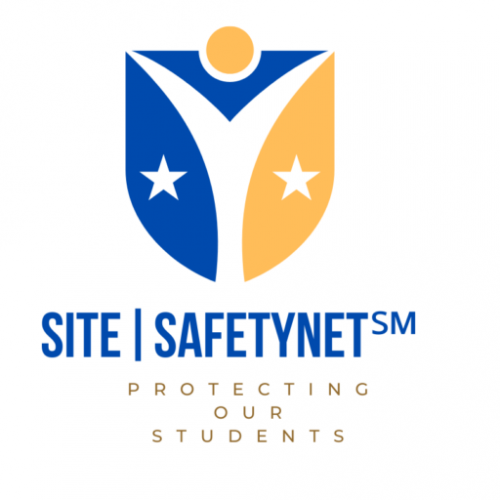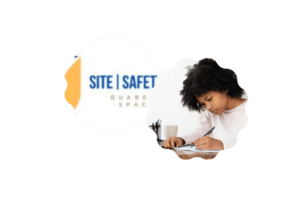SITE|SAFETYNET℠ is not just an application; it’s a catalyst for change in the K-12 educational landscape, ushering in a new era of school safety, security management, and reporting. 
 This state-of-the-art platform is at the forefront of innovation, redefining and elevating safety standards by focusing on several pivotal elements:
This state-of-the-art platform is at the forefront of innovation, redefining and elevating safety standards by focusing on several pivotal elements:
Streamlining Safety Processes: SITE|SAFETYNET℠ simplifies how schools approach site safety by simplifying and streamlining complex safety protocols into manageable, easy-to-follow procedures. This approach eliminates cumbersome paperwork and traditional, time-consuming methods, allowing for more efficient safety management, reducing the administrative burden, and more focus on proactive safety measures.
Routine Safety Integration: The application integrates safety practices into the daily operations of schools, establishing a new norm in safety management. This regular integration ensures that safety is not an afterthought but a fundamental aspect of school culture and provides continuous vigilance and proactive risk management.
Digital Convenience: Leveraging digital-first technology, SITE|SAFETYNET℠ offers a user-friendly interface that caters to users of all technical abilities. This digital convenience ensures broad adoption and consistent use across various educational settings. This accessibility ensures widespread adoption and effective use.
Engaging Staff in Safety Roles: The platform allows specific safety tasks to be assigned to designated staff members, fostering a sense of responsibility and involvement in maintaining a safe school environment. This feature ensures that the assigned personnel do not overlook and execute safety tasks with routine tasks, enhancing engagement and accountability.
Affordability: Recognizing the budget constraints of many educational institutions, SITE|SAFETYNET℠ is priced affordably, making top-tier safety solutions accessible to countless schools. This affordability does not compromise the effectiveness of safety measures, ensuring all students benefit from a secure learning environment for less than the cost of a daily lunch budget.
User-Friendly Design: The apps are designed for convenience, with features accessible from various devices and locations. This flexibility allows school staff to conduct safety assessments and access important information anytime, anywhere, ensuring safety management encapsulates the entire school premises and surrounding areas.
Transforming Safety Culture: SITE|SAFETYNET℠ is changing how schools perceive and integrate safety by incorporating these features regularly. The platform fosters a culture where safety is considered an integral and seamless part of everyday school life rather than an external, enforced protocol.
Tailored Safety Assessment REPORT for K-12 Schools 
In-Depth Vulnerability Analysis with Demographic Considerations:
The value is in reporting! The report provides detailed insights into a school’s infrastructure vulnerabilities and the strength of its law enforcement partnerships. Each vulnerability is meticulously categorized based on its severity level, offering a clear understanding of the most critical areas that require immediate attention. This segmentation allows for a prioritized approach to addressing safety concerns. We uniquely incorporate the school’s demographics, understanding that no two schools are alike. This approach ensures the analysis is highly relevant and customized to each school’s context.
Demographic Parameters Utilized:
To tailor our assessment, we consider five critical demographic categories:
Enrollment: The number of students enrolled provides insight into the scale of safety measures needed.
School Level: Different strategies are required for elementary, middle, or high schools, each having unique challenges and requirements.
Geographical Location: Safety priorities differ for urban, suburban, and rural schools due to varying external factors and resources.
Building Size: The total square footage of the buildings is critical in planning safety protocols and evacuation strategies.
Campus Size: The number of acres the school encompasses influences perimeter security and monitoring needs.
Actionable Safety Improvement Strategies:
Our report provides practical steps for enhancing safety measures tailored to the school’s demographic profile. Alongside identifying vulnerabilities, the report outlines actionable steps for improving safety measures. These recommendations are tailored to each school’s specific needs and contexts, ensuring a practical and effective approach to safety improvements. The guidance ranges from quick fixes to long-term strategic changes, enabling schools to make informed decisions.
Data-Driven Support with Demographic Insights:
Additional data, charts, and references bolster the findings and recommendations in the report. This evidence-based approach validates the report’s conclusions and provides a comprehensive view of the safety landscape by its demography. Including these elements informs and educates stakeholders, fostering a deeper understanding of the safety issues at hand.
Overall Safety Rating with Demographic Context:
A crucial feature of our report is the ‘Overall Safety Rating.’ This score encapsulates the general safety level of the school, providing a quick yet comprehensive overview of its current safety status. The rating system helps benchmark the school’s safety against industry standards and guides tracking improvements.
Through these critical features, SITE|SAFETYNET℠ enhances and revolutionizes school safety.


 This state-of-the-art platform is at the forefront of innovation, redefining and elevating safety standards by focusing on several pivotal elements:
This state-of-the-art platform is at the forefront of innovation, redefining and elevating safety standards by focusing on several pivotal elements:
 Through these critical features, SITE|SAFETYNET℠ enhances and revolutionizes school safety.
Through these critical features, SITE|SAFETYNET℠ enhances and revolutionizes school safety.